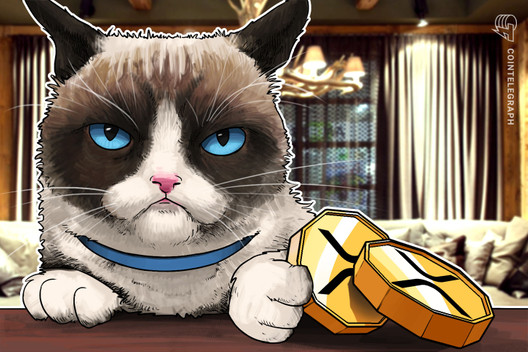$22M of Curve Finance algo stablecoin minted since mainnet launch
Decentralized finance protocol CurveDAO has successfully launched its algorithmic stablecoin crvUSD on the Ethereum network.
326 Total views
8 Total shares

Own this piece of history
Collect this article as an NFT
Decentralized finance (DeFi) protocol Curve Finance has launched its native algorithmic U.S. dollar-pegged stablecoin, dubbed “crvUSD” on the Ethereum mainnet — minting more than $22 million worth of the crvUSD so far.
According to data from blockchain explorer Etherscan, the contract has minted more than $22 million worth of crvUSD in the past 8 hours, with $20 million of that amount minted within the first 5 minutes.
The deployment of crvUSD on the Ethereum network is a significant step towards the public release of the algorithmic stablecoin. Notably, the stablecoin remains inaccessible to general users, pending integration with Curve’s front-end user interface on its official website.
Responding to a query about when users could expect to see the stablecoin released to the public in the official Curve Finance Telegram chat, an admin claimed it will be coming “soon.”
As many figured – deployment of crvUSD smart contracts has happened!
This is not finalized yet because UI also needs to be deployed. Stay tuned!
— Curve Finance (@CurveFinance) May 3, 2023
At the time of publication, Curve Finance is one of the largest DeFi protocols in the industry, with roughly $4.4 billion in total value locked (TVL), according to data from DeFiLlama.
Algorithmic stablecoins became the focal point of industry-wide criticism following the collapse of the Terra ecosystem in May 2022 when the TerraUSD (UST) stablecoin lost its peg and the value of its sister token Terra — later renamed Terra Classic (LUNC) — plunged by more than 99%. UST’s value was maintained by a complex arbitrage mechanism that was eventually brought down by a group of sophisticated traders.
Curve’s crvUSD differs from the now-defunct UST, by utilizing a similar design similar to MakerDAO’s (MKR) DAI (DAI) stablecoin. According to the crvUSD whitepaper, crvUSD will function as a “collateralized-debt-position” stablecoin, meaning that users must deposit collateral in order to take out a loan in crvUSD. The preferred asset for use as collateral has not yet been specified by Curve Finance.
Curve isn’t the only DeFi protocol with its sights set on bringing an algorithmic stablecoin to market. Competitor protocol Aave (AAVE) released a testnet version of its “native decentralized, collateral-backed stablecoin” dubbed GHO in February this year.
Related: DeFi driving zkSync growth as 1inch deploys on Ethereum layer-2 scaling platform
Curve’s plan to release an algorithmic stablecoin was first announced by Curve Team member @mrblocktw in a Twitter post on July 21, 2022.
— 區塊先生 ⚠️ (rock #58) (@mrblocktw) July 21, 2022
Later the same day, Curve’s founder, Michael Egorov confirmed that the stablecoin would be overcollateralized at the ReDeFine Tomorrow Web3 summit.
Following the launch of the new stablecoin, the protocol’s native Curve DAO (CRV) token spiked approximately 7% according to data from TradingView. CRV is currently changings hands for $0.96.
Magazine: ZK-rollups are ‘the endgame’ for scaling blockchains, Polygon Miden founder









